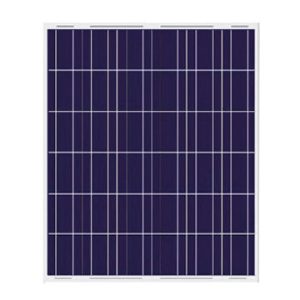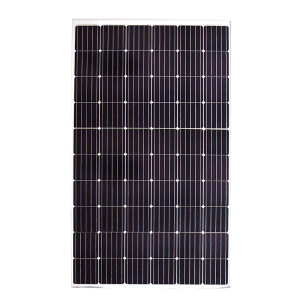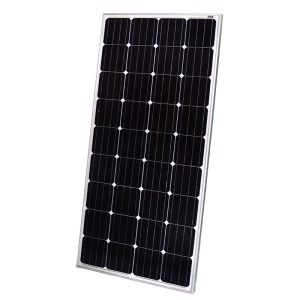Harnessing the power of the sun through solar energy systems has become increasingly popular as individuals and businesses seek to reduce their carbon footprint and energy costs. At the heart of these systems lies the solar inverter, a crucial component that converts the direct current (DC) generated by solar panels into alternating current (AC) for household or commercial use. In this comprehensive guide, we’ll explore the benefits, installation, maintenance, and real-world applications of 40kW solar inverters, a powerful solution for maximizing energy savings.
What is a 40kW Solar Inverter?
A 40kW solar inverter is a high-capacity device designed to convert the DC electricity produced by solar panels into AC electricity suitable for powering homes, businesses, or feeding into the grid. These inverters are typically used in large-scale solar installations, such as commercial or utility-scale projects, where a significant amount of energy needs to be generated and converted efficiently.
Key Features and Specifications:
- Input Voltage Range: Typical input voltage ranges for 40kW solar inverters are between 480-800V DC, allowing them to handle the combined output from multiple solar panel arrays.
- Output Voltage and Frequency: Standard output voltage options include 208V or 480V, with a frequency of 60Hz, making them compatible with grid-tied systems in most regions.
- Maximum Efficiency: Modern 40kW solar inverters boast high efficiency ratings, often exceeding 98%, ensuring minimal energy losses during the conversion process.
- MPPT Tracking: Advanced Maximum Power Point Tracking (MPPT) technology enables these inverters to optimize energy harvesting from solar panels by adjusting to changing environmental conditions.
- Certifications and Compliance: Reputable 40kW solar inverters are certified and comply with relevant standards, such as UL 1741, IEEE 1547, and NEC requirements, ensuring safety and reliability.
Efficiency and Performance:
The conversion efficiency of 40kW solar inverters is a crucial factor in maximizing energy savings. These inverters employ advanced algorithms and MPPT technology to continuously track and adjust to changing environmental conditions, ensuring optimal power output from the solar panels. Additionally, their high-quality components and robust design contribute to their exceptional performance and longevity.
By converting the DC electricity from solar panels into usable AC power with minimal energy losses, 40kW solar inverters play a pivotal role in maximizing the energy savings potential of solar energy systems. Their ability to handle large-scale installations and efficiently convert significant amounts of energy make them an attractive choice for commercial and utility-scale projects.
Benefits of Using a 40kW Solar Inverter
Investing in a 40kW solar inverter system offers numerous benefits, including substantial energy cost savings, environmental sustainability, and scalability to meet growing energy needs.
Reduced Energy Costs:
One of the primary advantages of using a 40kW solar inverter system is the potential for significant energy cost savings. By generating clean, renewable energy from the sun, you can reduce your reliance on utility companies and their fluctuating electricity rates. Here’s an example of how a 40kW solar inverter system can impact your energy costs:
Assuming an average electricity rate of $0.12 per kilowatt-hour (kWh) and an annual energy production of approximately 60,000 kWh from a 40kW solar inverter system, you could potentially save around $7,200 per year on your electricity bills. Over the typical 25-year lifespan of a solar energy system, these savings can accumulate to a substantial amount, often exceeding the initial investment cost.
Environmentally Friendly:
In addition to cost savings, using a 40kW solar inverter system contributes to a reduced carbon footprint and a more sustainable future. By generating electricity from a renewable source like the sun, you can significantly reduce your reliance on fossil fuels and minimize the emission of greenhouse gases associated with traditional energy production methods.
Scalability and Flexibility:
One of the key advantages of 40kW solar inverter systems is their modular design, which allows for easy scalability. As your energy needs grow, you can expand the system by adding more solar panels without the need for a complete system overhaul. This flexibility ensures that your investment remains relevant and adaptable to changing circumstances.
Furthermore, 40kW solar inverters can be used in both grid-tied and off-grid solar systems, providing versatility to meet your specific requirements. Grid-tied systems allow you to feed excess energy back into the utility grid, potentially earning credits or compensation, while off-grid systems offer energy independence and self-sufficiency.
Installing a 40kW Solar Inverter System
Proper installation is crucial for ensuring the optimal performance and longevity of a 40kW solar inverter system. This process typically involves the following steps:
Site Evaluation and Planning:
Before installing a 40kW solar inverter system, a thorough site assessment is necessary to determine the optimal location and orientation for the solar panels. Factors such as sun exposure, shading, and roof structure must be carefully evaluated to maximize energy production.
Additionally, system sizing is an important consideration. A professional solar installer can help you determine the appropriate system size based on your energy consumption, available space, and budget. This ensures that the 40kW solar inverter and the number of solar panels are properly matched for optimal performance.
Obtaining the necessary permits and adhering to local building codes and utility interconnection requirements is also crucial during the planning phase.
Wiring and Connections:
Proper wiring and connections are essential for the safe and efficient operation of a 40kW solar inverter system. Professional installers will follow detailed wiring diagrams to ensure the correct connections between the solar panels, the inverter, and the electrical panel or grid.
Selecting the appropriate cable sizes and types for the DC and AC connections is crucial, considering factors such as voltage, current, and distance. Proper grounding and bonding are also essential for safety and compliance with electrical codes.
Commissioning and Testing:
Once the installation is complete, the 40kW solar inverter system must undergo commissioning and start-up procedures. This may involve configuring software settings and performing necessary tests to ensure the system is functioning correctly and producing the expected power output.
Regular monitoring and troubleshooting are also important to identify and address any issues that may arise during operation, ensuring the system’s optimal performance over its lifetime.
Maintenance and Troubleshooting
Like any complex system, a 40kW solar inverter installation requires regular maintenance and occasional troubleshooting to ensure its continued efficiency and longevity.
Regular Inspections:
Conducting regular visual inspections is crucial for identifying any physical damage, loose connections, or signs of wear and tear. These inspections should also include monitoring the system’s performance, including energy production, efficiency, and any error codes or alerts.
Cleaning and maintenance tasks, such as cleaning solar panels and inverter components, should be performed according to the manufacturer’s recommendations to ensure optimal performance.
Common Issues and Solutions:
Even with proper maintenance, issues may arise with a 40kW solar inverter system. Some common problems and their potential solutions include:
- Inverter Faults: Overheating, ground faults, or communication errors can occur in inverters. Troubleshooting steps may involve checking ventilation, grounding connections, and software updates or resets.
- Solar Panel Issues: Shading, soiling, or physical damage to solar panels can reduce energy production. Identifying and addressing these issues through cleaning, trimming vegetation, or panel replacement may be necessary.
- Wiring and Connection Problems: Loose terminals or faulty cables can cause disruptions in power flow. Inspecting and tightening connections or replacing damaged wiring may resolve these issues.
By adhering to a regular maintenance schedule and promptly addressing any issues that arise, you can ensure the long-term reliability and optimal performance of your 40kW solar inverter system.
Real-World Case Studies
To illustrate the real-world benefits and energy savings achieved with 40kW solar inverter systems, let’s explore a few case studies from various applications.
Residential Installation:
In a residential installation in California, a homeowner opted for a 40kW solar inverter system paired with 200 solar panels. The system was designed to meet the household’s annual energy consumption of approximately 60,000 kWh.
After the first year of operation, the homeowner reported a reduction of over 80% in their electricity bills, with an estimated payback period of around 7 years. The system’s performance exceeded expectations, generating enough energy to power the entire home and feed excess electricity back into the grid, earning credits from the utility company.
Commercial Application:
A large office building in Texas installed a 40kW solar inverter system as part of their sustainability efforts and to reduce operational costs. The system consisted of multiple inverters and over 1,000 solar panels, with a total capacity of 400kW.
In the first year alone, the building’s energy costs were reduced by nearly 30%, translating to significant savings for the company. Additionally, the solar installation contributed to the company’s environmental goals by offsetting a substantial amount of greenhouse gas emissions.
Utility-Scale Project:
A solar farm in Arizona, spanning over 100 acres, utilized multiple 40kW solar inverters as part of a large-scale utility project. The project involved the installation of over 200,000 solar panels and a total system capacity of 50 megawatts (MW).
This massive solar installation not only provided clean, renewable energy to thousands of homes and businesses in the region but also contributed to the state’s renewable energy goals. The project’s environmental impact was significant, offsetting an estimated 70,000 metric tons of carbon dioxide emissions annually, equivalent to removing over 15,000 cars from the road.
These case studies demonstrate the versatility and effectiveness of 40kW solar inverter systems in maximizing energy savings across various applications, from residential homes to large-scale commercial and utility projects.
Choosing the Right 40kW Solar Inverter
With numerous manufacturers and models available in the market, selecting the right 40kW solar inverter for your specific needs can be a daunting task. Here are some factors to consider:
Top Manufacturers and Models:
Some of the leading manufacturers of 40kW solar inverters include SolarEdge, Fronius, SMA, and ABB. These companies offer a range of models with varying features, specifications, and performance ratings. For example, the SolarEdge SE40K-US and the Fronius Symo 40.0-3 are popular choices known for their high efficiency, advanced monitoring capabilities, and robust designs.
When comparing models, consider factors such as conversion efficiency, MPPT capabilities, monitoring and communication features, and warranty coverage. Reputable manufacturers with a proven track record of producing high-quality and reliable solar inverters are often the preferred choice.
Factors to Consider:
- System Compatibility: Ensure that the 40kW solar inverter you choose is compatible with your solar panel system, considering factors such as voltage ranges and MPPT capabilities. Proper compatibility is crucial for optimal performance and energy production.
- Efficiency and Performance: Evaluate the efficiency and performance ratings of different 40kW solar inverter models, as these can directly impact the overall energy production and cost savings of your system.
- Monitoring and Communication: Modern solar inverters often offer advanced monitoring and communication capabilities, allowing you to track system performance, energy production, and identify potential issues remotely. Consider models with robust monitoring features and compatibility with smart home systems or mobile apps.
- Installation and Maintenance: Consider the ease of installation, wiring requirements, and maintenance needs of different 40kW solar inverter models. Choosing a model with a straightforward installation process and readily available support can save time and resources in the long run.
By carefully evaluating your specific needs, system requirements, and the features offered by various manufacturers, you can select the most suitable 40kW solar inverter for your solar energy system, maximizing energy savings and ensuring a reliable and efficient operation.



